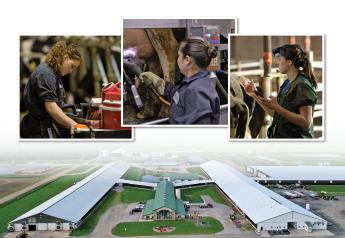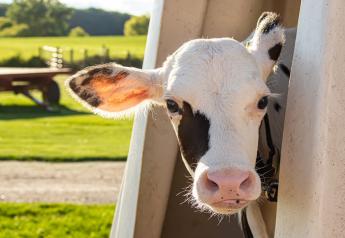Summer 2024 Predicted to Bring on the Heat

Bust out the sunscreen and cattle misters. It’s gonna be a hot one this summer if USDA meteorological predictions are correct.
Dr. Dennis Todey, Director of the USDA Midwest Climate Hub, shared on a recent webinar sponsored by the Iowa Farm Bureau Federation that current weather patterns are signaling excessive summer heat ahead.
He said the outlook for July, August, and September is for above-average temperatures in virtually the entire country. The areas showing the greatest likelihood for above-average temperatures are the western third of the country -- minus a band on the far west coast that includes most of California – and the upper New England states.
The precipitation outlook, on the other hand, is neutral, except for a two-to-three-states-deep region along the entire eastern seaboard, which models show having a likelihood of above-average precipitation.
Todey said there are strong signals that the U.S. is in a “rapid transition” between a strong “El Nino” weather pattern to an equally prominent “La Nina” pattern – a shift that will likely occur sometime between June and August 2024.
The current El Nino was short-lived, lasting only about a year, and followed 3 years of a La Nina pattern. El Nino patterns are typically associated with mild winters. This was certainly the case in 23-24, which posted near-record warmest winter temperatures in December, January, and February. The states with the most pronounced warmth compared to normal winter temps included North Dakota, Minnesota, Wisconsin, Michigan, New York, and the New England states up to Maine.
La Nina is the opposite counterpart of El Nino. In its most recent, 3-year stretch, it coincided with dry weather in a large part of the country. Todey said Iowa – the nation’s largest corn-producing state – has been in a consistent D1 (moderate) drought since July 2021, a record length for the USDA Drought Monitor.
As of the first week of April 2024, pockets of “Extreme” drought were noted by the Drought Monitor in Iowa, Montana, New Mexico, and Texas. Southeastern New Mexico also has an area of “Exceptional” drought, which is the highest categorization of drought status by the Drought Monitor.
“We can’t say for sure whether the next La Nina will perpetuate dry conditions, but there is also no strong indicator of precipitation,” noted Todey. “We will likely be very reliant on getting rainfalls at the right time through the summer.”
The meteorologist has observed an interesting shift in precipitation patterns that is affecting growing seasons. “In terms of temperatures, we’re seeing an increase in growing season length by about 10 days per decade,” he noted. “At the same time, there has been a 20-year trend of midsummer dryness, with more annual rainfall arriving in the spring.”
Coming out of a warm winter is affecting moisture levels on hand. Todey said the lack of frozen soils allowed moisture to absorb more readily – the good news. But the bad news is that warmer temps caused evapo-transpiration to occur at a higher rate. Essentially, the two factors cancelled each other out.
“Iowa is currently at ground-zero for driest soil conditions,” he declared. “While not as widespread, some of those conditions also exist in parts of Missouri and Kansas. It seems probable that we’ll need to preserve moisture this year.”
Looking toward the planting season and beyond, Todey offered the following advice:
- Pull back on yield goals for crop projections and inputs. Lackluster soil moisture recovery could limit the effectiveness of fertilizer.
- Plant as early as possible to take advantage of spring moisture.
- Reduce tillage – every time you do a tillage pass, you lose moisture.
- Closely monitor well and groundwater sources upon which you rely for livestock and/or irrigation, so you can proactively develop alternative plans if necessary.
The full webinar and additional comments from Todey can be viewed here.
For more on weather, read:







